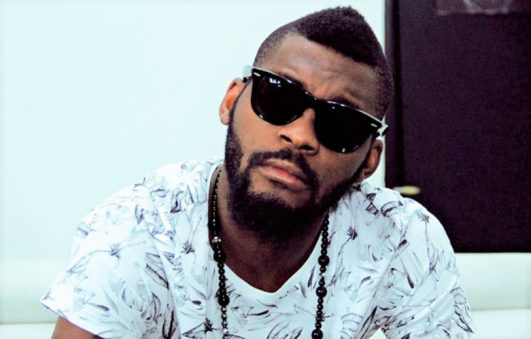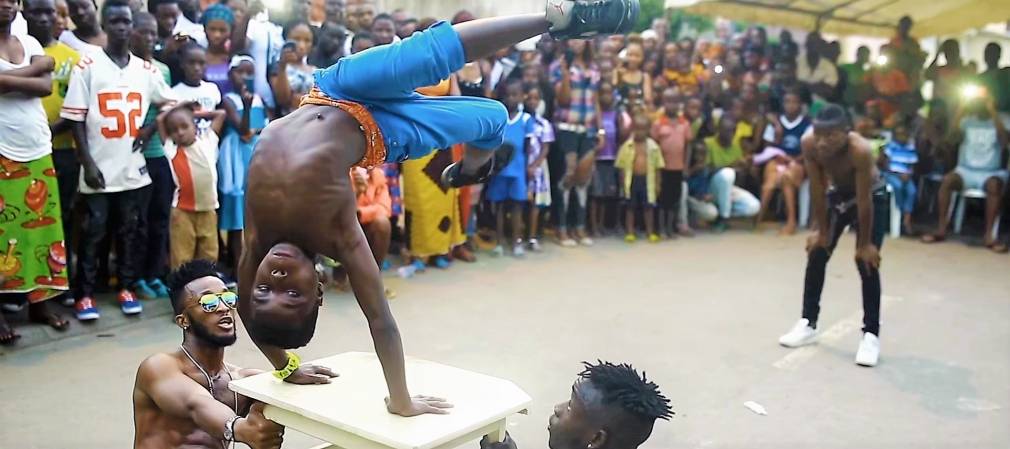One should always be wary of certain certainties and peremptory assertions. Like: “this coupé-décalé trend, Roukaskas, it’s just noise! Rubbish! This isn’t music!” I’ll skip over the rest. This virulent, recurrent and unquestionable criticism sometimes comes from the mouth of some great Ivorian artist friends of mine, much younger than me by the way.
A rather funny situation. Usually it’s old farts like me who make these kinds of remarks, like the infamous, “it was better before“.
Let’s add to that some intellectuals, journalists, and other birds of a feather… In short, “those who know”. Those who look with contempt at this unbearable racket. “What? This racket coming from the streets? Where these poorly educated young people hang out?” we hear them say over and over again.
But now I’m tempted to ask, “Whose fault is that?“
It was better before vs it’s better now
Having said that, I must admit that at the time of the eruption of coupe-décalé on the Ivorian musical scene in 2003, my personal opinion on this question was not much better. My view, what some miight’ve called “Sagacité”, was very limited: these people, for me, were not even musicians. They were polluting the sound space with a detestable ideology: the apology of excessive consumption, swindling, easy money and flamboyance erected as an ideal of life. For a country that was struggling to survive, this seemed a bit steep. I found pitiful this wave of Congolese sub-sappers with Ivorian sauce, born under curfew, while the crisis was bogging us down. You might say that it was an popular soup that simmered in the nightclubs, drifting on the banks of the Ebrié Lagoon. A kind of easy mood concoction in response to the often fatal bullets.

This generation had just reversed the old tradition of “Pièr-tchè”: the rich guy who impressed the gallery by pouring a rain of banknotes on the Djeli-griot. This time, in the new tradition of coupe-décalé, it is the singer (often in playback) who floods his public with banknotes… What normally disgusts the conscious generation.
Ruckus at the Bataclan
We are in 2005. I leave Abidjan totally desperate, like others, by this trend that I considered nonsense. Especially if compared to zouglou and its conscious texts, as intelligent as it was funny. So I combed through the latest productions of coupé-décalé cassettes from Abidjan, to report to the family in Paris, the birthplace of this delirium. As soon as I arrived, I was requisitioned by my brothers for a concert of… coupé-décalé. And where is it? Hold on to your hat: at the Bataclan! I am hallucinating!… There must be a mistake somewhere!

That evening, when I arrive in front of the mythical concert hall, Africans and Caribbeans are crowded out front, as in the good old days of Kassav. There are people inside and even more outside. There are even white people! I tell myself that there is something in this business that I don’t quite understand. How did the coupe-décalé come to the Bataclan? They’re not going to perform with just a DJ in the temple of live music? In order not to die a fool, I overcame my reservations and I entered by playing elbows and shoulders, advancing in the crowd like Moses who crosses the Red Sea (there, I exaggerate a little… But well, it is my storyteller side). The concert hall is packed. In front of the stage, the audience is almost exclusively female. On the stage, there is a black man in a Scottish kilt (what bullshit). I don’t know who it is. He’s sucking on a cigar as big as a log, as if he was going to set it on fire. Indeed, the DJ ignites the room when Le Molare and a part of the Jet Set arrive. The banknotes rain down. The public fights to recover some. The music thunders. It is the collective trance, pure madness…
I say to myself, “something is happening here“. It is beyond me, but it is happening. That’s how I start to reconsider the coupé-décalé phenomenon as something more than a simple epiphenomenon like “Sagacité”, just a summer hit.
The DJ’s enter the dance, and take their place in the saga
In the meantime, to explain quickly, the DJ’s have taken over coupé-décalé. By dint of doing atalaku (singing the praises) for others, they also want to be sung! Exit the JET SET and its progenitors … especially since 2006, when its president Douk Saga died. A new generation gradually took control of the movement. One of them is none other than DJ Arafat. He mounted the summits of the coupe-décalé by storm. Okay, I know. There’s talk about his antics, his misbehaviour and clashes with his former partner Debordo Leekunfa, not to mention the other figures of Ivorian coupe-decalé.

But despite the buzz culture of and its drifts on social networks, it is clear that DJ Arafat is the number one coupe-decalé artist in Côte d’Ivoire. It is also him and his Yorogang which, it seems to me, install the concept of Roukaska in the Ivorian musical landscape.
A class on roukas
A French journalist friend of mine once asked me: “Roukaskas? What is it again?” I must say that I myself did not know much about it until that evening, at the closing of the FAR (Festival des Arts de la Rue) of Grand Bassam. A crowd had formed on the Place de l’Abissa. Intrigued, I got closer to see it clearly. In the middle of the circle, a seven year old boy does a triple back somersault, without taking a leap. He follows up with a Ziguéhi shift before ending up with his legs in the air, spinning on his head, which is itself stuck in the sandy ground. He bounces back as if nothing had happened and finds himself standing, before rejoining the circle. Another kid, even more outrageous, jumps out of the circle. He literally flies in the air, to fall back flexibly and launches into a frantic dance, linking complicated figures in the pure hip-hop style… in the Ivorian sauce. We are far from the old-fashioned coupe-decalé. I take out my smartphone and I film what I think is a discovery.
The next day, I find myself at the Donwahi foundation (a famous art gallery in Abidjan). I show my video to Marc, the son of my friend Jems KOKO BI (a great sculptor). His son tells me: “it’s not bad…” I am offended. “What do you mean, it’s not bad?” To convince me, he takes out his laptop and shows me a video of DJ Arafat’s dancers. I realize then my blunder and the extent of this generational movement impelled by the Yorobo (one of the blazes of DJ Arafat, from now on Beerus Sama).
This youngster thus opened my eyes to a major actor of the contemporary reformulation of the coupe-décalé, which has become even more Ivorian than the original genre, which borrowed lightly from the ndombolo of the two Congo. Let’s talk about the orientation of the different productions: when he leaves the studio, in addition to the usual playback in nightclubs and other places, DJ Arafat introduces a live style as an instrumentalist. His use of drums, for example, seems to extend the notions of the traditional Bété and Guéré percussions of his roots. The same ones that guide the steps of the dancers.
Which brings us to the choreographies all in roukaskas (acrobatic dance) popularized by the Yorogang. A mixture of Ziguéhi (attitudes and gestures of the Abidjanese hooligans inspired by John Pololo) and the most varied battles of the hip-hop culture, with an obvious wink, according to me, to the Boloye dance (a traditional Sénoufo acrobatic dance). The whole sprinkled with a zest of old fashioned coupe-decalé steps.
This surge is carried by a whole generation of people from five to twenty-five years old. (Beyond that, we’re starting to get overwhelmed). In any case, “the kids are having fun” and recognize themselves in the powerful energy that DJ Arafat’s sound conveys. It must be said that by dint of hearing the insults and other delicacies exchanged throughout social networks between Arafat and his rivals, I should have turned away from this case, if I had not been hit in the heart by the roukaskas of the street.
Is the son even aware of this? In any case, Arafat knew how to digest some of the musical and gestural influences that have flooded the Ivory Coast since the 80s. I want to talk about the makossa of Cameroon, the Congolese Ndombolo, the Ziguehi of Ivory Coast through hip-hop. He will have thus succeeded in a spectacular syncretism. With him (and a few others), the coupe-décalé is more Ivorian than ever. We feel the typical urban breath of Abidjan. Because DJ Arafat assumes his Nouchi culture (culture and urban language of Abidjan forged by the young people of the street) and found a way to sublimate the gestures of Ziguehi.
I know what I’m talking about, having worked for twenty years on Abidjan’s urban culture and having contributed to set up the Voggo Soutra collective, following Pierre Houon, the father of DJ Arafat. The first to have produced rap in Nouchi. In particular: the founding pieces “Samara Kollo” of Rap Kenny, and “Djosseur de Naman” of Roch Bi. On this side, DJ Arafat has a lot to live up to. His father had done everything to discourage him from following in his footsteps… and failed! In my humble opinion, he is the bearer of something very strong, which perhaps exceeds him, but of which he is, as in the cinema, the main actor. And I am enchanted by this something.

